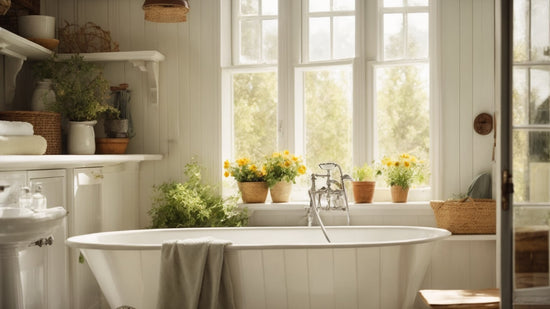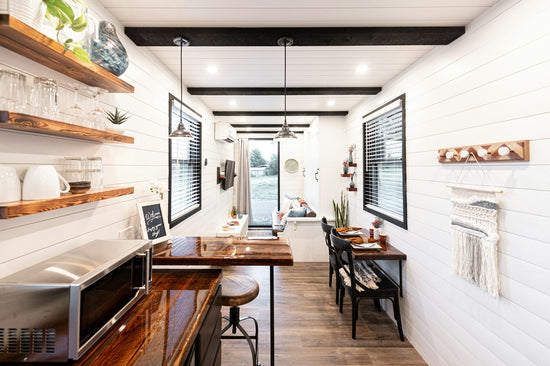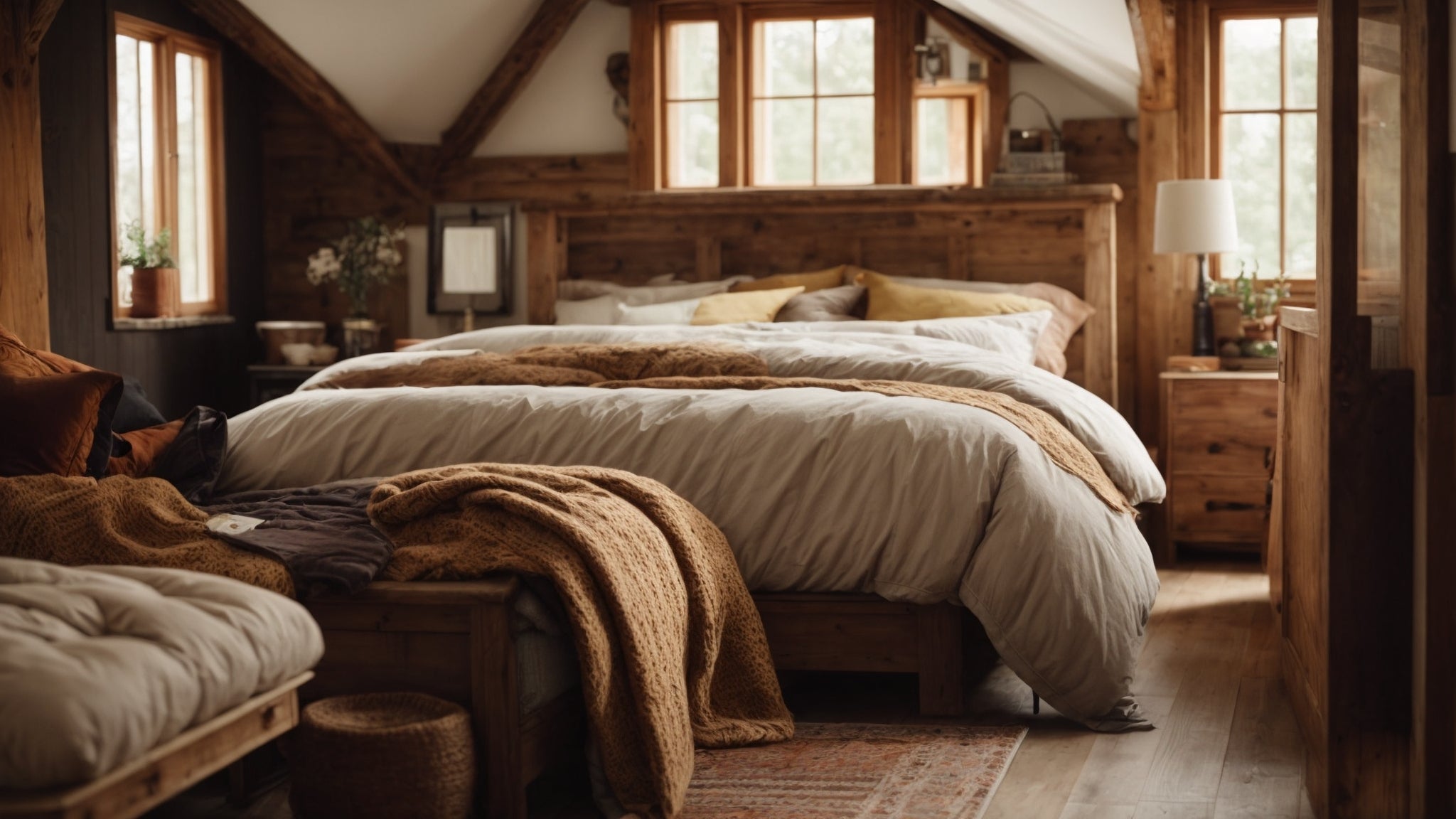Table of content
1. Understanding Minimalist Interior Design
What is minimalist interior design?
Minimalist interior design is characterized by simplicity, clean lines, and a monochromatic palette with color used as an accent. It typically features an open floor plan, ample natural light, functional furniture, and focuses on the form, color, and texture of only a handful of essential elements.
2. Incorporating Scandinavian Elements
How can you incorporate Scandinavian elements into your home decor?
You can incorporate Scandinavian elements by adding cozy textures like wool and faux fur, incorporating natural materials such as wood and stone, and embracing a neutral color palette with pops of muted tones. Additionally, consider incorporating minimalist furniture with clean lines and simple designs.
3. Choosing the Right Color Palette
What are some tips for choosing the right color palette for your home?
Consider the mood you want to create in each room and choose colors that reflect that mood. Neutral colors like white, beige, and gray can create a calming atmosphere, while bold colors like navy blue or emerald green can add drama and personality. Experiment with different color combinations to find what works best for your space.
4. Maximizing Natural Light
How can you maximize natural light in your home?
Keep window treatments minimal to allow as much natural light in as possible. Choose sheer curtains or blinds that can be easily opened during the day. Additionally, strategically place mirrors opposite windows to reflect light throughout the room.
5. Creating Functional Zones
What are some ways to create functional zones in an open floor plan?
Use area rugs to define different areas within the open space, such as a living area, dining area, and workspace. Arrange furniture to create natural divisions between each zone while maintaining an overall sense of flow and cohesion.
6. Incorporating Statement Pieces
How can you incorporate statement pieces into a minimalist design?
Choose one or two statement pieces, such as a bold piece of artwork or a unique furniture item, to serve as focal points in the room. Keep the rest of the decor simple to allow these statement pieces to shine.
7. Embracing Texture
Why is texture important in home decor?
Texture adds depth and visual interest to a space, making it feel more inviting and dynamic. Incorporate a variety of textures, such as smooth metals, rough wood, soft textiles, and shiny ceramics, to create a layered and tactile environment.
8. Balancing Form and Function
How do you balance form and function in home decor?
Choose furniture and decor items that are both aesthetically pleasing and practical. Opt for multifunctional pieces that serve more than one purpose, such as a coffee table with built-in storage or a sofa that can also be used as a guest bed.
9. Incorporating Biophilic Design
What is biophilic design, and how can you incorporate it into your home?
Biophilic design is the practice of bringing elements of nature into the built environment to improve well-being. You can incorporate biophilic design by adding indoor plants, natural materials like wood and stone, and large windows that provide views of the outdoors.
10. Creating a Cohesive Color Scheme
How can you create a cohesive color scheme throughout your home?
Choose a base color for the walls and larger furniture pieces, then select two or three accent colors to use throughout the space. Use these accent colors consistently in smaller decor items like throw pillows, rugs, and artwork to tie the room together.
11. Incorporating Personal Touches
How can you incorporate personal touches into your home decor?
Add items that reflect your personality and interests, such as family photos, travel souvenirs, or handmade artwork. These personal touches will make your home feel unique and welcoming.
12. Mixing Old and New
What are some tips for mixing old and new pieces in home decor?
Combine antique or vintage furniture with modern pieces to create an eclectic and unique look. Pairing old and new items adds character and depth to a space while allowing you to express your individual style.
13. Incorporating Smart Home Technology
How can you incorporate smart home technology into your decor?
Invest in smart home devices like thermostats, lighting systems, and speakers that can be seamlessly integrated into your decor. Choose devices with sleek designs and minimalist interfaces to maintain the overall aesthetic of your home.
14. Creating a Zen-Inspired Retreat
What are some key elements of a zen-inspired home?
Keep the space clutter-free and opt for clean lines and natural materials like wood and stone. Incorporate soft lighting, soothing colors, and natural elements like plants and water features to create a calming and tranquil atmosphere.
15. Incorporating Global Influences
How can you incorporate global influences into your home decor?
Add elements like textiles, artwork, and decor items from different cultures to create a worldly and eclectic look. Mix and match patterns, colors, and textures to reflect the diverse influences of global design.
16. Designing a Functional Home Office
What are some key features of a functional home office?
Choose a quiet and well-lit area of your home to set up your office space. Invest in a comfortable desk and ergonomic chair, adequate storage solutions, and good lighting to create a productive work environment.
17. Creating a Relaxing Bedroom Retreat
How can you create a relaxing bedroom retreat?
Choose soothing colors and soft textiles to create a calm and inviting atmosphere. Invest in a quality mattress and bedding, and add personal touches like plush throw pillows and cozy blankets to make the space feel cozy and inviting.
18. Designing an Inviting Living Room
What are some key elements of an inviting living room?
Include plenty of comfortable seating options, such as sofas, armchairs, and ottomans, arranged in a conversational layout. Add layers of texture with throw pillows, rugs, and curtains, and incorporate statement lighting to create ambiance.
19. Creating a Welcoming Entryway
How can you create a welcoming entryway?
Add a console table or bench for storage and display, along with hooks or a coat rack for outerwear. Incorporate a mirror to check your appearance before heading out the door, and add a rug or welcome mat to define the space.
20. Designing a Functional Kitchen
What are some tips for designing a functional kitchen?
Optimize storage space with cabinets, drawers, and pantry organizers to keep essentials within reach. Choose durable and easy-to-clean materials for countertops and backsplashes, and invest in high-quality appliances that meet your cooking needs.
21. Creating an Outdoor Oasis
How can you create an outdoor oasis?
Add comfortable seating options like lounge chairs and outdoor sofas, along with a dining area for al fresco meals. Incorporate greenery with potted plants and hanging baskets, and add ambient lighting to extend the enjoyment of your outdoor space into the evening.
22. Incorporating Artwork and Accessories
How can you incorporate artwork and accessories into your home decor?
Choose pieces that complement the overall style and color scheme of your home, and display them strategically to create visual interest. Mix and match different types of artwork, such as paintings, photographs, and sculptures, and use accessories like throw pillows, vases, and candles to add personality.
What is minimalist interior design?
Minimalist interior design is characterized by simplicity, clean lines, and a monochromatic palette with color used as an accent. It typically features an open floor plan, ample natural light, functional furniture, and focuses on the form, color, and texture of only a handful of essential elements.
How can you incorporate Scandinavian elements into your home decor?
You can incorporate Scandinavian elements by adding cozy textures like wool and faux fur, incorporating natural materials such as wood and stone, and embracing a neutral color palette with pops of muted tones. Additionally, consider incorporating minimalist furniture with clean lines and simple designs.
What are some tips for choosing the right color palette for your home?
Consider the mood you want to create in each room and choose colors that reflect that mood. Neutral colors like white, beige, and gray can create a calming atmosphere, while bold colors like navy blue or emerald green can add drama and personality. Experiment with different color combinations to find what works best for your space.
How can you maximize natural light in your home?
Keep window treatments minimal to allow as much natural light in as possible. Choose sheer curtains or blinds that can be easily opened during the day. Additionally, strategically place mirrors opposite windows to reflect light throughout the room.
What are some ways to create functional zones in an open floor plan?
Use area rugs to define different areas within the open space, such as a living area, dining area, and workspace. Arrange furniture to create natural divisions between each zone while maintaining an overall sense of flow and cohesion.
How can you incorporate statement pieces into a minimalist design?
Choose one or two statement pieces, such as a bold piece of artwork or a unique furniture item, to serve as focal points in the room. Keep the rest of the decor simple to allow these statement pieces to shine.
Why is texture important in home decor?
Texture adds depth and visual interest to a space, making it feel more inviting and dynamic. Incorporate a variety of textures, such as smooth metals, rough wood, soft textiles, and shiny ceramics, to create a layered and tactile environment.
How do you balance form and function in home decor?
Choose furniture and decor items that are both aesthetically pleasing and practical. Opt for multifunctional pieces that serve more than one purpose, such as a coffee table with built-in storage or a sofa that can also be used as a guest bed.
What is biophilic design, and how can you incorporate it into your home?
Biophilic design is the practice of bringing elements of nature into the built environment to improve well-being. You can incorporate biophilic design by adding indoor plants, natural materials like wood and stone, and large windows that provide views of the outdoors.
How can you create a cohesive color scheme throughout your home?
Choose a base color for the walls and larger furniture pieces, then select two or three accent colors to use throughout the space. Use these accent colors consistently in smaller decor items like throw pillows, rugs, and artwork to tie the room together.
How can you incorporate personal touches into your home decor?
Add items that reflect your personality and interests, such as family photos, travel souvenirs, or handmade artwork. These personal touches will make your home feel unique and welcoming.
What are some tips for mixing old and new pieces in home decor?
Combine antique or vintage furniture with modern pieces to create an eclectic and unique look. Pairing old and new items adds character and depth to a space while allowing you to express your individual style.
How can you incorporate smart home technology into your decor?
Invest in smart home devices like thermostats, lighting systems, and speakers that can be seamlessly integrated into your decor. Choose devices with sleek designs and minimalist interfaces to maintain the overall aesthetic of your home.









